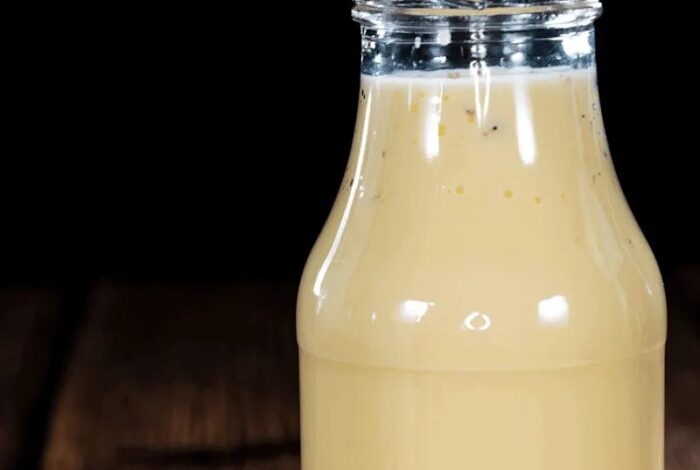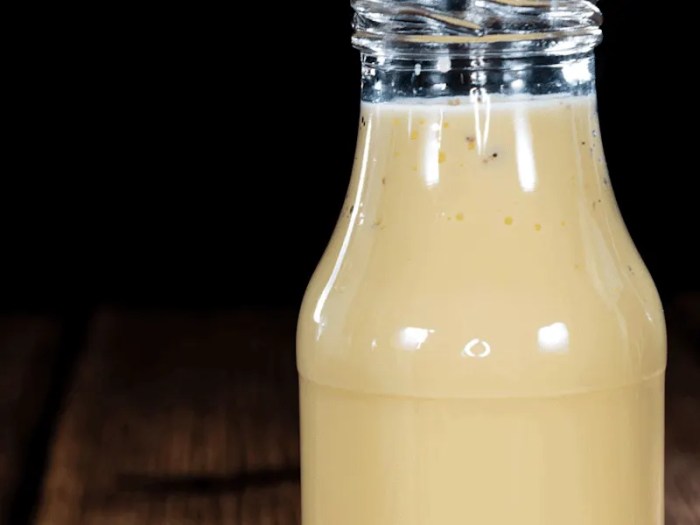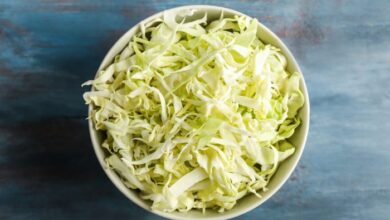
Homemade Flax Seed Milk: A Delicious & Healthy Dairy-Free Option
Homemade flax seed milk – it’s a delightful, dairy-free alternative that’s been gaining popularity for its nutty flavor and impressive nutritional benefits. This creamy, plant-based milk is packed with omega-3 fatty acids, fiber, and protein, making it a great choice for those seeking a healthy and delicious addition to their diet.
From smoothies to baked goods, flax seed milk can be used in a variety of recipes, adding a unique and satisfying touch to every dish. The best part? Making your own flax seed milk is incredibly easy, allowing you to control the ingredients and ensure freshness.
Introduction to Homemade Flax Seed Milk
Flax seed milk, a plant-based milk alternative, has gained significant popularity in recent years, becoming a staple in many vegan and health-conscious households. It is made by blending flax seeds with water, resulting in a creamy and subtly nutty beverage that offers a range of nutritional benefits.Flax seed milk is a powerhouse of nutrients, packed with omega-3 fatty acids, fiber, and plant-based protein.
These essential nutrients contribute to various health benefits, including heart health, digestive well-being, and blood sugar regulation.
Versatility of Flax Seed Milk
Flax seed milk’s versatility extends beyond being a refreshing beverage. It can be used in a wide range of recipes, substituting dairy milk in various applications. Here are some examples of how flax seed milk can be used:
- Baking:Flax seed milk can be used in cakes, muffins, and cookies, adding moisture and a subtle nutty flavor.
- Smoothies:Its creamy texture makes it a perfect addition to smoothies, providing a smooth and satisfying consistency.
- Cereal:Pour flax seed milk over your favorite cereal for a healthy and delicious breakfast option.
- Coffee and Tea:Enjoy your morning coffee or tea with a splash of flax seed milk for a creamy and nutritious alternative to dairy milk.
- Sauces and Soups:Flax seed milk can be used as a base for creamy sauces and soups, adding a rich and nutty flavor.
Ingredients and Equipment
Making homemade flax seed milk is a simple and rewarding process that allows you to control the ingredients and create a delicious and nutritious beverage. This section will guide you through the essential ingredients and equipment needed to embark on your homemade flax seed milk journey.
Essential Ingredients
The core ingredients for making flax seed milk are readily available and easy to find. Here’s a breakdown of what you’ll need:
- Flax Seeds:The foundation of flax seed milk is, of course, flax seeds. You can use either golden or brown flax seeds, both of which offer similar nutritional benefits. Golden flax seeds tend to have a milder flavor, while brown flax seeds may have a slightly nuttier taste.
Choose whichever you prefer or what is readily available.
- Water:Water is the primary liquid used to create the milk base. You can use filtered or spring water for the best taste.
Optional Flavorings
To enhance the flavor of your homemade flax seed milk, you can experiment with a variety of optional flavorings. Here are some popular choices:
- Vanilla Extract:A classic addition that adds a touch of sweetness and a warm, comforting aroma.
- Maple Syrup:A natural sweetener that can be adjusted to your desired level of sweetness.
- Dates:A natural sweetener that also adds a slightly chewy texture.
- Nut Butter:Adds a creamy texture and a nutty flavor. Almond butter, cashew butter, or peanut butter are all good options.
- Spices:Experiment with spices like cinnamon, nutmeg, or cardamom for a unique flavor profile.
Equipment
The necessary equipment for making homemade flax seed milk is straightforward and likely already available in your kitchen. Here’s what you’ll need:
- Blender:A high-speed blender is ideal for pulverizing the flax seeds and creating a smooth milk consistency.
- Cheesecloth or Nut Milk Bag:This is used to strain the milk and separate the pulp from the liquid.
- Container for Storing the Milk:Choose a glass jar or container with a tight-fitting lid to store your homemade flax seed milk in the refrigerator.
Alternative Ingredients
For those with dietary restrictions or preferences, there are alternative ingredients you can use to make homemade flax seed milk:
- Plant-Based Milk:If you are allergic to nuts or soy, you can use another plant-based milk as the base, such as almond milk, coconut milk, or oat milk.
- Sweeteners:If you prefer a less sweet milk, you can use a natural sweetener like stevia or erythritol instead of maple syrup or dates.
The Making Process
Making flax seed milk is a straightforward process that involves soaking, blending, and straining. This method ensures the extraction of the creamy goodness from the flax seeds, resulting in a nutritious and delicious milk alternative.
Soaking the Flax Seeds
Soaking the flax seeds is the first step in the process, which softens the seeds and makes them easier to blend. This process also helps to activate enzymes that break down the seeds’ nutrients, making them more readily available to your body.
- Start by measuring out 1/2 cup of whole flax seeds. This amount will yield approximately 1 cup of flax seed milk.
- Pour the flax seeds into a bowl and cover them with 3 cups of filtered water. The water should be at room temperature.
- Stir the seeds and water gently to ensure all the seeds are submerged.
- Cover the bowl with a lid or plastic wrap and let the seeds soak for at least 4 hours or overnight. This will allow the seeds to soften and release their nutrients.
Blending the Flax Seed Mixture
Once the flax seeds have soaked, it’s time to blend them into a creamy milk. The blending process should be done in stages to ensure a smooth and consistent texture.
- After soaking, drain the flax seeds and discard the water. You can save the water for other uses, like watering plants, as it contains some of the nutrients from the flax seeds.
- Transfer the soaked flax seeds to a high-speed blender. Add 2 cups of fresh filtered water to the blender.
- Blend the mixture on high speed for 1-2 minutes, or until the mixture is completely smooth and creamy. You may need to stop the blender a few times and scrape down the sides to ensure everything is blended evenly.
- If you prefer a thicker milk, you can add less water to the blender. Conversely, if you prefer a thinner milk, you can add more water.
Straining the Flax Seed Milk
The final step in making flax seed milk is straining the mixture to remove any remaining flax seed particles. This process ensures a smooth and fine milk, free from any gritty texture.
- Line a fine-mesh sieve or cheesecloth with a clean kitchen towel or muslin cloth. This will prevent any flax seed particles from passing through the strainer.
- Pour the blended flax seed mixture into the strainer and allow it to drain over a bowl. You may need to press gently on the mixture with a spoon to encourage the milk to drain.
- The milk will continue to drip for a few minutes. Once the dripping has slowed, you can discard the remaining flax seed pulp. This pulp can be composted or used in other recipes, such as crackers or breads.
Flavor Variations

The beauty of homemade flaxseed milk lies in its versatility. You can easily customize its flavor to suit your taste buds, transforming it from a simple base into a delightful beverage. This section explores various flavor variations, including vanilla, chocolate, and nut flavors, along with their impact on the nutritional content and taste of the milk.
Vanilla Flaxseed Milk
Vanilla is a classic flavor pairing for milk, adding a subtle sweetness and a touch of warmth. Here’s a simple recipe for vanilla flaxseed milk:* Ingredients:
1 cup flaxseeds
Homemade flax seed milk is a versatile addition to my kitchen, perfect for smoothies, baking, or even just a refreshing drink. I find it especially enjoyable when paired with a hearty meal like chef Johns roasted leg of lamb , which provides a delicious contrast in textures and flavors.
The nutty, slightly sweet taste of the flax seed milk cuts through the richness of the lamb, making for a truly satisfying dining experience.
4 cups water
1 teaspoon vanilla extract
Pinch of salt (optional)
* Instructions:1. Combine flaxseeds and water in a blender. 2. Blend until smooth and creamy. 3.
Strain the milk through a cheesecloth or nut milk bag. 4. Stir in vanilla extract and salt. 5. Store in the refrigerator for up to 4 days.Vanilla extract is a natural flavoring agent that adds a pleasant aroma and taste without significantly altering the nutritional profile of the milk.
It is a good source of antioxidants and may have anti-inflammatory properties.
Homemade flax seed milk is a great dairy-free alternative, and it’s surprisingly versatile! I love using it in my baking, especially when making treats like yeast free cinnamon rolls. The flaxseed adds a subtle nutty flavor that complements the cinnamon beautifully, and the texture is just right for a fluffy, delicious roll.
Plus, you can feel good about using a plant-based milk that’s both healthy and flavorful.
Chocolate Flaxseed Milk
For a decadent treat, consider adding chocolate to your flaxseed milk. Here’s a recipe for chocolate flaxseed milk:* Ingredients:
1 cup flaxseeds
4 cups water
1/4 cup unsweetened cocoa powder
1 tablespoon maple syrup (optional)
Pinch of salt (optional)
* Instructions:1. Combine flaxseeds, water, cocoa powder, maple syrup, and salt in a blender. 2. Blend until smooth and creamy. 3.
Strain the milk through a cheesecloth or nut milk bag. 4. Store in the refrigerator for up to 4 days.Cocoa powder is rich in antioxidants and flavanols, which may have benefits for heart health and cognitive function.
However, it also contains a small amount of fat and calories, so it’s important to consume it in moderation.
Nut-Flavored Flaxseed Milk
Nut flavors, such as almond, cashew, or hazelnut, can add a unique and satisfying dimension to flaxseed milk. Here’s a recipe for almond-flavored flaxseed milk:* Ingredients:
Homemade flax seed milk is a fantastic dairy-free alternative, especially when you’re looking for a creamy and nutritious addition to your breakfast. It’s also surprisingly versatile – I love using it in smoothies or even as a base for a delicious soup like this quick brussels and bacon recipe.
The nutty flavor of the flax milk pairs perfectly with the smoky bacon and the sweet, slightly bitter brussels sprouts.
1 cup flaxseeds
4 cups water
1/4 cup almond butter
1 teaspoon vanilla extract (optional)
Pinch of salt (optional)
* Instructions:1. Combine flaxseeds, water, almond butter, vanilla extract, and salt in a blender. 2. Blend until smooth and creamy. 3.
Strain the milk through a cheesecloth or nut milk bag. 4. Store in the refrigerator for up to 4 days.Almond butter is a good source of protein, fiber, and healthy fats. It also contains vitamin E, which is an antioxidant that helps protect cells from damage.
Remember, these are just a few suggestions for flavor variations. Feel free to experiment with different combinations of flavors and sweeteners to create your own unique flaxseed milk concoctions.
Storage and Shelf Life
Homemade flax seed milk, with its delicate nature, requires proper storage to maintain its freshness and quality. Refrigeration and airtight containers are essential for extending its shelf life and preventing spoilage.
Refrigeration and Airtight Containers
Storing homemade flax seed milk in the refrigerator is crucial for preserving its freshness and extending its shelf life. Refrigeration slows down the growth of bacteria, which can cause spoilage and alter the taste and texture of the milk. Airtight containers are essential to prevent the absorption of odors from other foods in the refrigerator, which can affect the flavor of the milk.
Glass jars or containers are ideal, as they are non-reactive and do not impart any flavors to the milk.
Shelf Life of Homemade Flax Seed Milk
Homemade flax seed milk, unlike commercially produced milk, has a shorter shelf life due to the lack of preservatives. Refrigerated flax seed milk typically lasts for 3-4 days, but it can separate and become less palatable after this time.
The separation occurs due to the natural properties of flaxseed, which can cause the milk to separate into layers.
Tips for Extending Shelf Life
There are a few techniques to extend the shelf life of homemade flax seed milk:
- Freezing:Freezing is a great option for longer storage. Flax seed milk can be frozen for up to 3 months. However, freezing can alter the texture slightly, making it slightly thicker. To thaw frozen flax seed milk, transfer it to the refrigerator overnight.
- Adding Preservatives:While homemade flax seed milk is often preferred for its natural ingredients, adding a small amount of lemon juice or apple cider vinegar can act as natural preservatives, extending its shelf life by a day or two.
Culinary Applications
Flaxseed milk, with its mild nutty flavor and creamy texture, is a versatile ingredient that can be used in a variety of culinary applications. It can be incorporated into smoothies, baked goods, and sauces, making it a great dairy-free alternative.
Smoothies
Smoothies are a great way to enjoy flaxseed milk, as its subtle flavor allows other ingredients to shine. Flaxseed milk can be used as a base for smoothies, blending seamlessly with fruits, vegetables, and other ingredients.
For a refreshing and nutritious smoothie, blend together 1 cup of flaxseed milk, 1/2 cup of frozen berries, 1/4 cup of spinach, and 1 tablespoon of chia seeds.
Baked Goods
Flaxseed milk can be used as a substitute for dairy milk in many baked goods, such as muffins, cakes, and cookies. It adds a subtle nutty flavor and helps to create a moist and tender texture.
When substituting flaxseed milk for dairy milk in baked goods, it’s important to note that flaxseed milk has a slightly thinner consistency than dairy milk. You may need to adjust the amount of liquid in the recipe, adding a little more or less depending on the specific recipe.
Sauces
Flaxseed milk can also be used to create creamy and flavorful sauces, such as Alfredo sauce or a creamy mushroom sauce. It adds a richness and depth of flavor that is comparable to dairy-based sauces.
For a creamy mushroom sauce, sauté 1/2 cup of sliced mushrooms in olive oil until softened. Add 1/4 cup of flour and cook for 1 minute. Gradually whisk in 1 cup of flaxseed milk, 1/4 cup of vegetable broth, and 1/4 teaspoon of salt. Bring to a simmer and cook until thickened.
Health Benefits and Considerations: Homemade Flax Seed Milk
Flax seed milk, a plant-based milk alternative, offers a range of potential health benefits due to its nutritional profile. It’s rich in essential nutrients, including omega-3 fatty acids, fiber, and antioxidants, which can positively impact various aspects of health. However, like any food, it’s essential to be aware of potential health considerations, such as allergies and interactions with certain medications.
Heart Health Benefits
Flax seed milk is a good source of alpha-linolenic acid (ALA), an omega-3 fatty acid that can help lower cholesterol levels and reduce the risk of heart disease. ALA is converted into EPA and DHA, which are important for heart health.
Studies have shown that consuming flax seeds or flax seed oil can improve blood lipid profiles, lowering LDL (bad) cholesterol and increasing HDL (good) cholesterol.
Digestive Health Benefits, Homemade flax seed milk
Flax seed milk is rich in fiber, both soluble and insoluble. Soluble fiber helps regulate blood sugar levels and can improve cholesterol levels, while insoluble fiber adds bulk to stools and promotes regular bowel movements. It can help prevent constipation and promote digestive health.
Anti-Inflammatory Properties
Flax seeds contain lignans, which are plant compounds with potent anti-inflammatory properties. These lignans can help reduce inflammation throughout the body, potentially reducing the risk of chronic diseases like heart disease, cancer, and arthritis.
Potential Health Considerations
Allergies
Flax seed milk may cause allergic reactions in some individuals, particularly those with allergies to other seeds or nuts. Symptoms of a flax seed allergy can range from mild skin reactions to more severe reactions, such as anaphylaxis.
Interactions with Medications
Flax seeds and flax seed oil can interact with certain medications, particularly blood thinners. It’s crucial to consult with a healthcare professional before consuming flax seed milk if you are taking any medications, especially blood thinners, to avoid potential complications.
Recommended Daily Intake
There is no established recommended daily intake of flax seed milk. However, consuming 1-2 tablespoons of flax seeds per day, or about 1-2 cups of flax seed milk, is generally considered safe for most adults. It’s important to note that excessive consumption of flax seed milk can lead to digestive issues like diarrhea.






